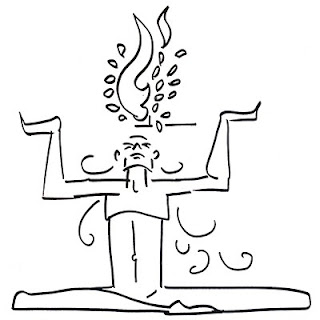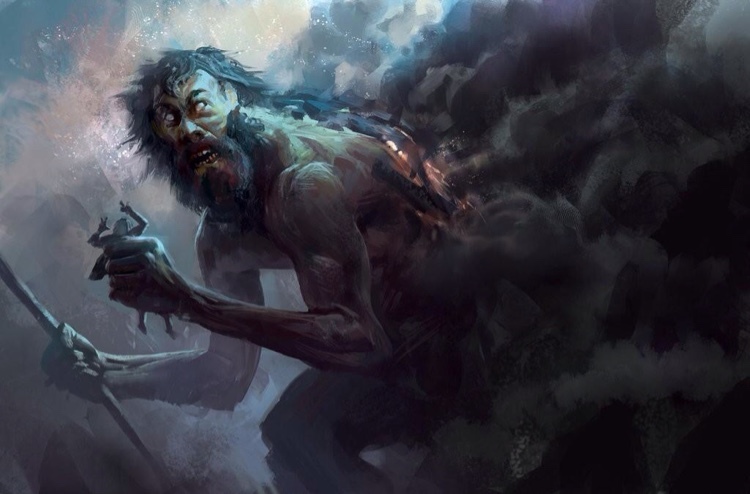Folk deities and their adoption into vedic pantheon
Prohibition of Idol Worship in Upanishad
"There is no likeness of him" (Svetasvatara Upanishad, Chapter 4, Verse 19)
"His form cannot be seen, No one can see him with the eyes" (Svetasvatara Upanishad, Chapter 4, Verse 20)
All through the vedic texts, we see that, the aryans never used idols for their poojas/worship but used yagyas to please their gods. When I say Aryans, they are not people who came from outside India but people who followed Vedas. Hindu spiritual studies can be broadly classified as Vedic and Tantric. Some say that Vedic studies came from Brahma and the tantric science came from Rudra.
During the ancient times, Brahmins did upanayana ( wearing of sacred thread ) and started their spiritual life with yagyas in which they offered ghee and other yagya components into the fire. The fire acted as the interface or medium of exchange between the mortals and immortals devatas.
One must not wonder as to how the oblations can reach their destination when fire has consumed most of them and the rest has been eaten by the performer of the Yajna as Prasad. The Devas donot have bodies physically constituted like ours by the five elements ( Earth, water, fire, sky,air). They dont need the type of material food that we consume. Even for us, the digestive organs convert the food into different forms before absorption by the body, In the same way, the sacrificial fire converts the oblation to a subtle state before carrying it to the Devas.
While at the same period of time, there was many tantric branches which followed idol worship. The vedic gods were all prayed for good weather and good yield from the agriculture. As time passed, majority of the people moved away from agriculture and was more into other business which made them adopt gods from tantric systems and now because of the competition in spiritual fields Brahmins slowly moved away from Vedic systems and started idol worship which was prohibited for them initially.
The problem here is that the tantric deities had meat, fish, alcohol also blood sacrifices in their worship systems. As Brahmins were basically vegetarians, as they took over the priesthood of tantric deities they werent able to do the rituals as it was done before. Instead of sacrificing a hen or a goat they substituted it with vegetables (to represent animal) and kumkum water ( to represent blood).
AN EXAMPLE WITH TAMIL FOLK TANTRIC DEITIES
Now we are going to discuss a tale of how ,many of the tamil tantric deities were given vedic touch as Brahmins came into the screen.
The problem here is that the tantric deities had meat, fish, alcohol also blood sacrifices in their worship systems. As Brahmins were basically vegetarians, as they took over the priesthood of tantric deities they werent able to do the rituals as it was done before. Instead of sacrificing a hen or a goat they substituted it with vegetables (to represent animal) and kumkum water ( to represent blood).
AN EXAMPLE WITH TAMIL FOLK TANTRIC DEITIES
Now we are going to discuss a tale of how ,many of the tamil tantric deities were given vedic touch as Brahmins came into the screen.
The Sangam landscape was classified into five categories, based on the mood, the season and the land. Tholkappiyam, mentions that each of these landscapes had an associated deity such as Seyyon (Murugan or Karthik) in Kurinji-the hills, Thirumaal (Vishnu) in Mullai-the forests, and Wanji - Ko (Indran -the god of Thunderstorm) in Marutham-the plains, and Varuna (the Water God) in the Neithal-the coasts and the seas and Kotravai (Mother Goddess) in Paalai - the desert. (instead of wasteland, it is also taken as a mixture of Kurinji and Mullai under the heat of burning sun)
Seiyon/Cheyon (the red one): Know as Murugan, the lord of warfare and hills. Lord Murugan (Cheyon - The Red One, Murugan - The Handsome - Later made equivalent with the Vedic Subhramanyah) .He was mentioned as the Lord of the first among the four classification of land - the Kuriji(Hilly region and its surroundings) in the oldest extant Tamil grammar, the Tholkappiyam. Cheyon - God of Hills ( Kurinji ), wars. Also called as Murugan. Cheyon means Red Person. Muruga patronized tamil language and literature.
Maiyon (lit.the dark one/mystic one or the supreme being): Known as Perumal, equivalent to Vishnu/Renganatha. The lord protector, he is also referred as protector of water resources and called as Maal/Kadalon when near Tanks, bunds and rivers. Maayon - God of Forest ( Mullai ), herds. Also called as Thirumal, Kannan and merged to Lord Vishnu later. Mal means Black.
Venthan - God of Agricultural fields ( Marutham ), water and wealth. Also called as Arasan. He is the king of Gods, Indra but his worship system was different.
Kadalon - God of Sea. Also called as Varuna. Varanam means Sea.
Kotravai - Kotravai is a goddess of the Palai region. According to Sangam literature, she belonged to the people of dry region. The people were mostly fierce robbers. The land of theirs was very hot, with very less agriculture or greenery. They had to rob the traders or others who passed through their region for their livelyhood. Their arrows were feared by the people of other regions. She was later merged to Goddess Durga.
From these we understand, the nature of life, job and the deities they worshiped. The deities they worshiped was greatly linked to the nature of the job they had. The people of the hills hunted animals for their livelihood so their God, Murugan was also a hunter.
Lord Shiva was seen in different manifestations in different states. In Kerala we see him in different incarnations or forms in different tantric traditions... Nallachan, Nayadi, Kirathamoorthy and so on. A yogic teacher, a mighty hunter, lord of all beings who beyond all physical. He is also seen a householder with his wife and kids. In Tamil literature God Shiva is mentioned as one among the saints of First Tamil sangam (Lemurian continent) along with God muruga, Sage agastya. InTamil nadu only the pre form of Linga (Stone pillar worship - Sudalai madan) is still continued today. Most of the Ancient tamil literatures are praising God Shiva.
This is an example of how tamil based deities where adopted, we can see the same conversion still happening. Some recent conversion we see are Madan Temples turning into Shiva temple in which the huge idols of Madan is removed and Shiva linga is installed.
We have also seen Chathan, a tribal tantric God of Kerala converted to Sastha in many places in kerala.
The problem with the worshipers of hill gods and other folk gods was that they never had a wrote down system of worship but a tradition of mouth to ear transfer of worship systems. When the systematic brahmins came to worship the folk gods they made the new rules and wrote them down into books like tantrasamuchayam etc. which now act as a guide for kerala tantric rituals.













Comments
Post a Comment